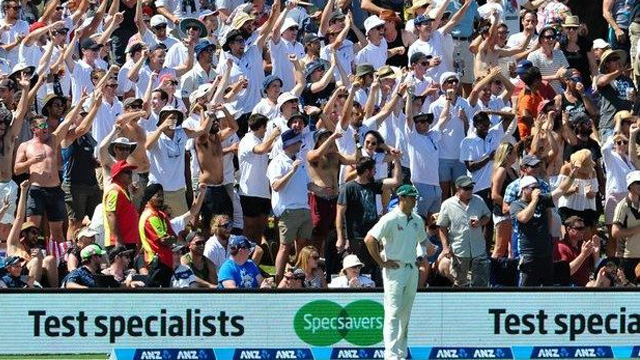Cricket has always been a game that embraces tradition. It’s what endears itself to its faithful followers and quite frankly alienates itself from those who don’t enjoy the game.
One of the ECB’s missions over the last few years, aside from winning a trophy (the name of which slips my mind), has been to get the general public re-engaged in the sport. We’re often told that amateur cricket is dying and that watching cricket is both not enjoyable and not possible since the game moved largely behind the paywall. Efforts to revitalise the game include programmes like All Stars cricket, a fun introduction to cricket for five-to-eight year olds, at grassroots level and initiatives to pack out crowds at international and domestic fixtures over the past few years.
It has been the razzmatazz of white-ball cricket that has invited those who previously felt shunned by the game to dip their toe into the water. The impact on the game’s audience has been remarkable with more fans flocking to watch the game, shown by both Surrey and Sussex selling out all but one of their home game’s during the group stages of their respective T20 Blast campaigns, and more watching the game on TV. The Guardian’s Ali Martin reports that the Cricket World Cup final, shared by Sky and Channel 4, peaked at 8.92m unique viewers in the UK, beating the previous record from the 2005 Ashes series which was shown on terrestrial TV. Of course, a home World Cup which ended in success in the most dramatic of manners has been the biggest driving force in catapulting cricket back into the public eye.
Those newbies that have been going to games have been impressed too. Not just by the standard of cricket on show (in fact, it would be naïve to say that was the main reason) but by the whole experience of going to cricket with the drinking, eating and singing that often accompanies it. That cocktail might upset the stomachs of staunch purists who believe the game’s values of respect and gentility are not just calcified in the rules on the field but also off it. Cricket fans have never liked being labelled as customers, as so often their football following counterparts are, because, in the most simple terms, it is just not cricket. But increasingly so, this is becoming the case.
But in the game’s attempt to appeal to the masses, to drive participation and put cricket back in the public eye (although many will tell you it never left), the type of fan that enjoys cricket has inevitably changed. In actuality, ‘change’ is the wrong term, one that gives an excuse for those who ‘enjoy the game just how it is’ to criticise the direction that both cricket and its supporters have evolved in.
Evolution is not always a bad thing either; in fact, cricket probably did need it. The answer as to whether the game’s governing body have gone about this in the right way is for another time (a la The Hundred) but in changing the how the game is viewed, the viewer was naturally going to change too.
This summer’s Ashes series has had a very different tone to usual. Not because the ‘tough’ Aussie’s have sacrificed some of their traditional grit in favour of ‘the spirit of the game’, as evidenced by David Warner keeping relatively shtum during the series – although we probably have Stuart Broad to thank for that. Whilst the action on the pitch has been as volatile, hostile and entertaining as any recent Ashes series, the atmosphere in the grounds themselves has been markedly different.
There now appears to be a new audience not just testing the waters of the shorter format but also Test cricket, the most prestigious form of the game. There’s probably not a better place to do so than in cricket’s most historic series too. The England supporters have come out in force, as they always do against their old foe. We’ve seen Watermelon inflatables, sustained drum rolls every time Nathan Lyon received the ball back to bowl following his Headingley nightmare and hysterics over Jack Leach’s glasses cloth. It’s been a funny old summer and one where the lines of expectation between watching the shorter formats of the game and watching Test cricket have been blurred.
For many it makes for a more enjoyable atmosphere in which to take in the rollercoaster ride that is a Test cricket series but for the more traditional fan the raucous crowds are just not what cricket is about. Whatever side you take on that, you have to accept that there is more than one way to enjoy watching cricket – and no right or wrong one at that.
Like England captain Joe Root has found out whilst managing the workload of the enigmatic fast bowler Jofra Archer, it’s a delicate equilibrium that no one is keen to upset. After all, the game really can’t afford to.
But where this balance has been upset this summer is the cases of abuse directed towards both players and fellow spectators. In this series alone we have seen the continual booing of the Australian trio of Cameron Bancroft, David Warner and Steve Smith (who brushed off the haters to produce a pretty good series by all accounts), with one case seeing an MCC member ejected from Lord’s for his abuse of the later. There’s also been abuse directed at Jofra Archer who was asked by two Australian fans to ‘show us your passport’, with the fans being immediately ejected.
Although it should never be tolerated, abuse directed at players, it could be said, is part and parcel of professional sport in the public eye. But one particular case that caught my eye during the series was that of an ordinary fan, just like you and I.
Still nothing from @lancscricket or @ECB_cricket regarding the sustained racism, homophobia, misogyny and antisocial behaviour that myself and others were subjected to/witnessed
So I’ve written it down in a letter which I will post to their CEO’s of tonight #Ashes2019 #ENGvsAUS pic.twitter.com/mvh9cTKFtw
— Ed Marsh (@ted_harsh) September 6, 2019
Ed Marsh published the letter he sent to Lancashire CEO Daniel Gidney on Twitter where he alleges he reported several incidents of racist, sexist and homophobic abuse in the stands at Old Trafford that stewards, who witnessed the abuse, failed to act upon. He compares this to someone tweeting Lancashire regarding a broken hand dryer at Old Trafford, which was promptly fixed, compared to his reporting of the distressing incident via the same medium which went ignored.
The ECB have since said that they are ‘extremely disturbed’ by such reports and will look to investigate further and many including myself hope this is the case. The governing body cannot allow such behaviour to fester in the sport and more specifically in the terraces. It’s one thing that cricket has always been proud of and one thing that fans of the game have often used to defend it’s supposed inferiority to football with.
As football has found out, once these incidents start to occur, they mushroom beyond comprehension to the point that it almost becomes part of the game’s fabric. The long process of eradicating hooliganism in football shows just how difficult it is to rid a sport of such behaviour.
By no means is this a dig at all supporters either, rather the minority who perhaps seem to prioritise drinking in the stands over watching the action unfold. In recent years I’ve heard of many families who now say the drinking culture of fans at cricket, particularly domestic T20 matches, which incites anti-social behaviour has made it impossible to take children to cricket.
Action needs to be taken now to ensure the game maintains the balance between entertainment and the sport. Whilst the game should continue to diversify, the same standards of common decency should continue to apply to all. This isn’t a case of snobbery from the purists who resist change and I maintain that there is no one way to watch the game. But surely, raucous crowds firing vile abuse left, right and centre is just not cricket.





